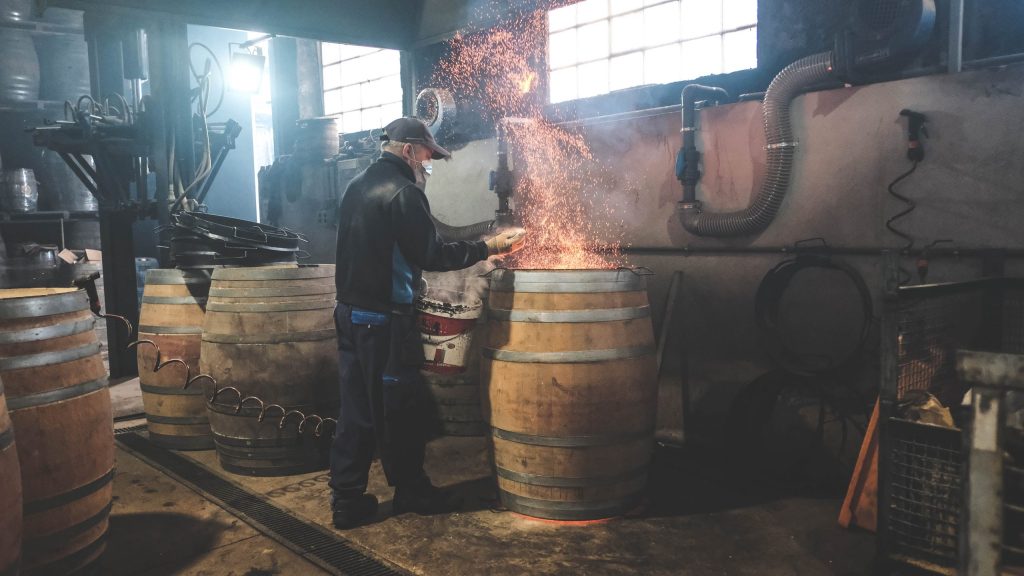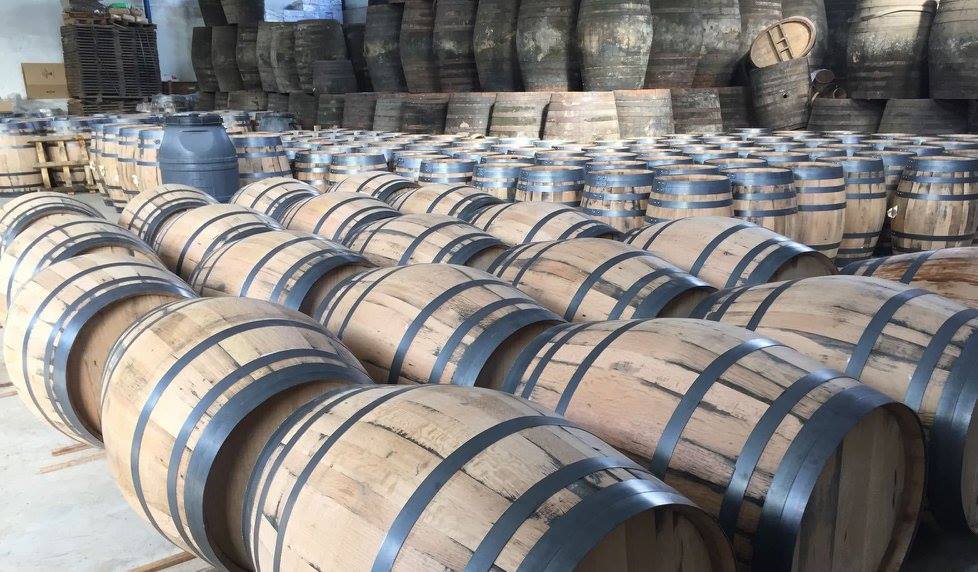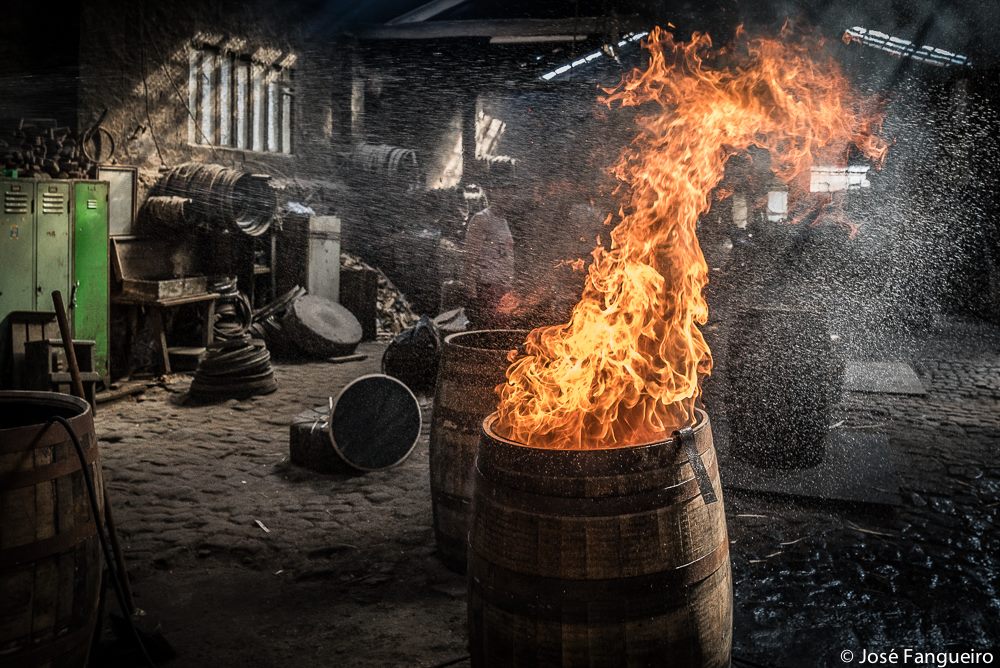The char is undoubtedly the most mystical part of barrel making and because we are a very traditional cooperage (we are based in Portugal), we treat it with the reverence it deserves. So that means that we do not use gas to char our barrels, rather we remove the heads from the barrel and set it over a fire (made with the off-cuts from our stave production in a small pit). Once the barrel has really heated up, one of our most skilled coopers then takes a bucket of saw dust and throws handfuls into the barrel to make a mini fireball. He carries on adding handfuls of sawdust until his experience tells him that he has reached the appropriate char level (we offer four levels of char – light ,medium, heavy and very heavy (alligator)), at which point the barrel is removed from the fire and the interior is gently hosed down to stop the process. To see this in action is to watch a master craftsman in action and it means that are barrels never see a gas flame, in order to maintain absolute authenticity for a cooperage.
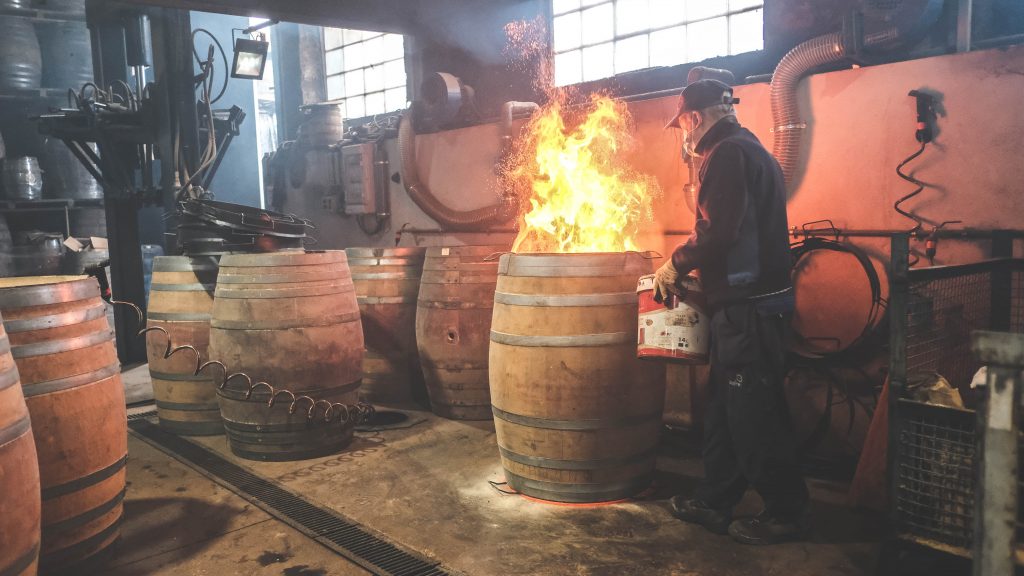
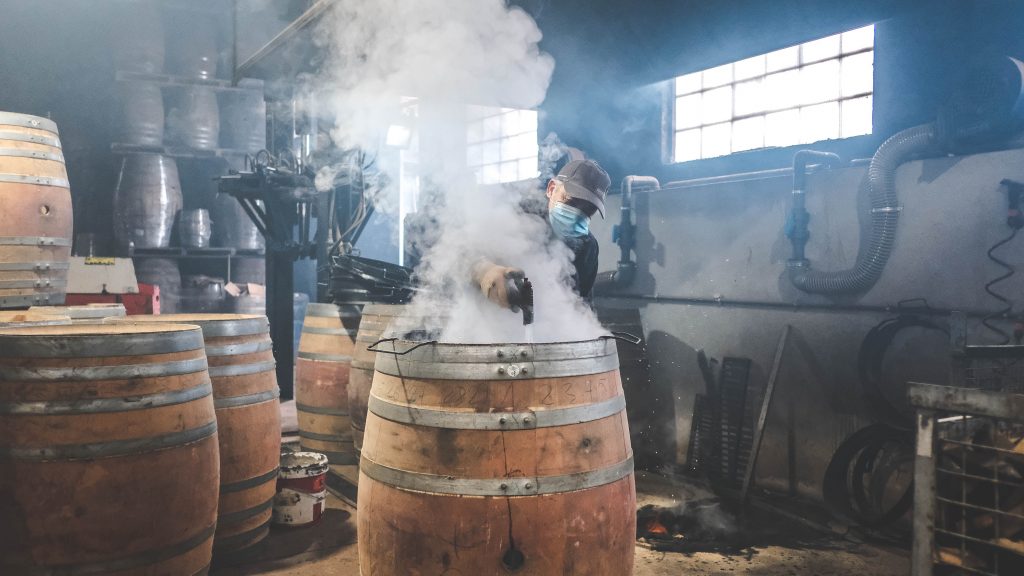
The char is such a mystical process, because of course its function is not to lend smokey flavours to the spirit that is going to be aged in the barrel, rather it is to awake the flavours that the wood contains. There are four compounds found in oak that need to be unlocked in order to impart flavour – hemicellulose, lignin, tannins, and oak lactones.
Hemicellulose is a polysaccharide, which means it is a chain of sugar molecules. When it is subjected to intense heat, this chain is broken down into wood sugars and this is what can give flavours of caramel or toffee. A similar thing happens with lignin, which gets broken down to vanillin and other compounds that give off vanilla flavours as well as spice and smokiness.
But whilst the char unlocks flavours from the hemicellulose and lignin, in the case of the tannins and oak lactones the function is to mellow the flavours that they impart. When our oak staves are seasoned for 24 months prior to being used to make barrels, much of the harsher tannins are released; tannins are an essential part of long term maturation, but charring the barrel helps to mellow the tannins, so the longer the char, the more mellow they become. Oak lactones work in a similar way – the give woody/coconut flavours and the higher the char the more mild these flavours are.
Finally the carbon produced by charring can act as a filter removing certain compounds (most importantly sulfur. Deciding on what char you require is a careful balance of these considerations and of course the real difficulty is that you only really discover what is the perfect char for your spirit once is has been maturing there for a few years.

